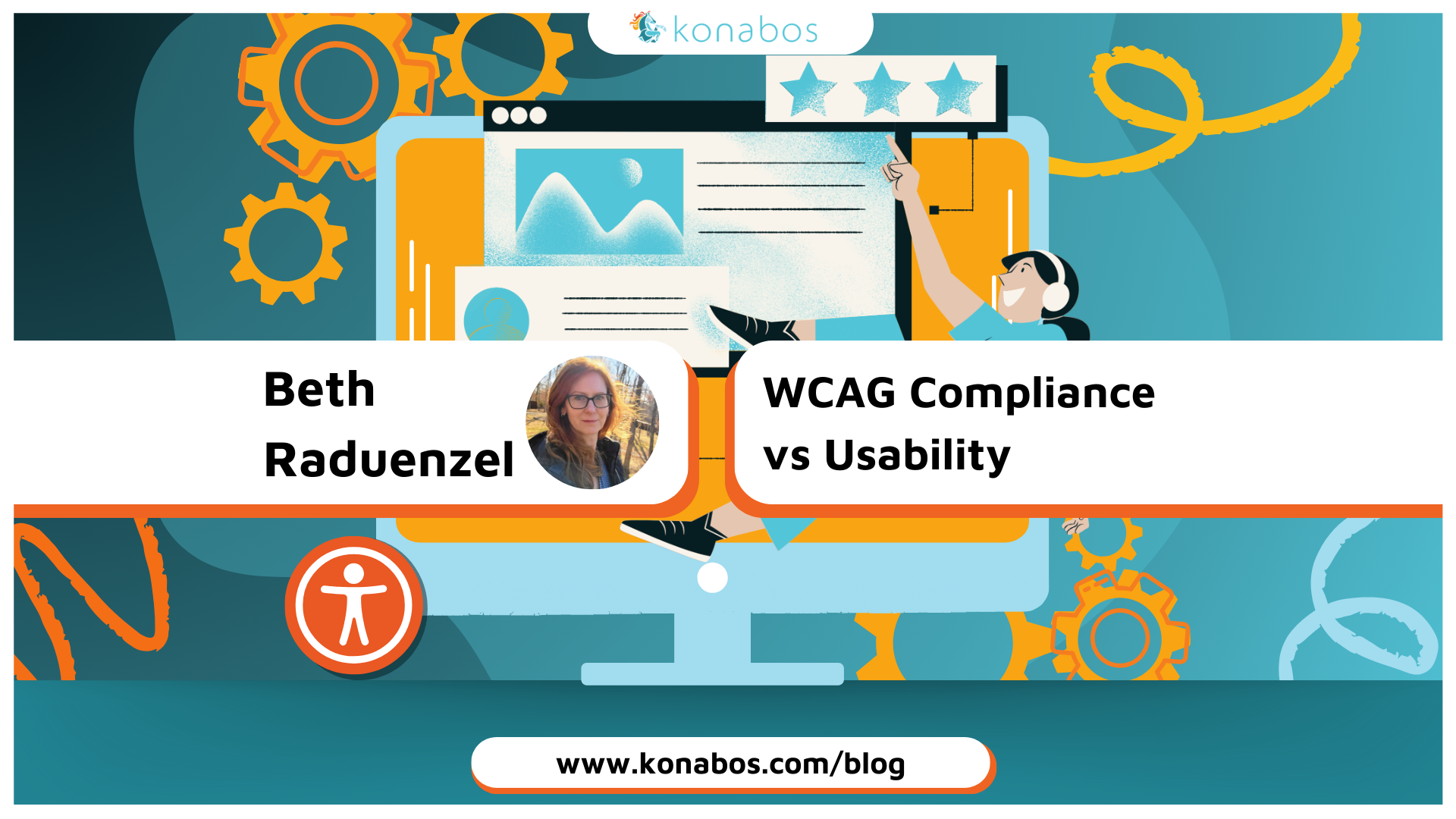How a WCAG-Compliant Website Can Still Be Unusable
Beth Raduenzel -
2 Apr 2024
The Web Content Accessibility Guidelines (WCAG) are a set of standards developed to ensure that websites are accessible to all users, regardless of their abilities. While adhering to WCAG guidelines is a crucial step towards creating an inclusive online environment, it's also important to acknowledge that compliance alone does not guarantee usability. In this article, we’ll explore the paradoxical scenario where a WCAG-compliant website may still fall short of being truly usable for all users.
Overemphasis on Technical Compliance
Putting an overemphasis on technical compliance without having a holistic understanding of user experience is one primary reason a WCAG-compliant website can be unusable. While meeting specific technical criteria is essential, it shouldn’t overshadow the importance of user-centric design. Designs that focus solely on ticking off accessibility checkboxes may neglect the overall user journey, which can lead to a less-than-optimal experience.
Lack of User Testing
WCAG compliance is necessary, but it doesn't replace the need for extensive user testing with individuals of differing abilities. Automated accessibility testing catches on average 25-40% of accessibility errors. A website that passes automated accessibility tests may still pose challenges for real users. This is why user testing is necessary for identifying usability issues that might not be found in technical evaluations. Ignoring user feedback can result in a website that fails to meet the practical needs and preferences of its audience, despite being WCAG-compliant.
Inconsistent Implementation
In some cases, a website may be WCAG-compliant on certain pages but not others. Inconsistencies like these can create confusion and frustration for users, especially those who rely on patterns or features to navigate the site. Uniform application of accessibility principles throughout a website is essential for creating a seamless and usable experience.
Complexity and Cognitive Overload
A “high cognitive load” refers to the mental effort or demand placed on an individual's cognitive resources during a particular task or set of tasks. Cognitive load theory suggests that our cognitive system has limited capacity, and when exceeded, we experience difficulties in processing information and completing tasks effectively.
A WCAG-compliant website that overwhelms users with unnecessary complexity or a high cognitive load can be considered unusable. Excessive features, convoluted navigation, and information overload can ruin the overall user experience, making it difficult for users to efficiently navigate and access the content they need. Finding a balance between WCAG compliance and simplicity is key to optimal usability.
Consequences to carrying a high cognitive load
- Reduced Working Memory Capacity
- Working memory is the cognitive system responsible for temporarily holding and manipulating information. When cognitive load is high, working memory capacity is often exceeded, leading to difficulties in processing new information or completing complex tasks.
- Working memory is the cognitive system responsible for temporarily holding and manipulating information. When cognitive load is high, working memory capacity is often exceeded, leading to difficulties in processing new information or completing complex tasks.
- Decreased Performance
- High cognitive load can negatively impact performance by slowing down our decision-making process, increasing errors, or hindering our ability to multitask.
- High cognitive load can negatively impact performance by slowing down our decision-making process, increasing errors, or hindering our ability to multitask.
- Increased Mental Fatigue
- Prolonged exposure to high cognitive load can lead to mental fatigue. This can result in decreased motivation, poor attention span, and an overall decline in cognitive performance.
- Prolonged exposure to high cognitive load can lead to mental fatigue. This can result in decreased motivation, poor attention span, and an overall decline in cognitive performance.
- Impaired Learning
- Learning is often compromised when cognitive load is excessive. It becomes challenging for individuals to absorb new information, make connections, and transfer knowledge from short-term to long-term memory.
- Learning is often compromised when cognitive load is excessive. It becomes challenging for individuals to absorb new information, make connections, and transfer knowledge from short-term to long-term memory.
- Negative Impact on User Experience
- In the context of design and user experience, interfaces or systems that impose a high cognitive load can frustrate users, leading to a less enjoyable and efficient interaction.
Reducing cognitive load is a fundamental consideration in various fields, such as education, user interface design, and workplace productivity. Effective communication, clear instructions, well-organized information, and thoughtful design are all strategies aimed at minimizing cognitive load and improving overall cognitive performance.
Lack of Flexibility and Personalization
While adhering to WCAG guidelines promotes general accessibility, it does not necessarily address the diverse needs and preferences of individual users. A website that doesn't provide options for customization or personalization may still alienate certain user groups. Offering flexibility in terms of font size, color contrast, and navigation preferences can significantly enhance the usability of a website for a broader audience.
Conclusion
In conclusion, achieving WCAG compliance is undoubtedly a significant step towards creating an accessible web environment. However, it's crucial to recognize that compliance alone does not guarantee usability. A website that prioritizes user experience, engages in extensive user testing, maintains consistent implementation, simplifies complexity, and allows for flexibility stands a better chance of being truly accessible and usable for all. Striking a balance between technical compliance and user-centric design is the key to breaking free from the paradox of an inaccessible, WCAG-compliant website.

Beth Raduenzel
Working for large Fortune 100 and 500 companies and small tech startups has given Beth a range of rarely attained experience. Beth has enjoyed improving user experiences across B2B, B2C, and SaaS Enterprise apps, whether as part of a large design team or wearing many hats as the sole designer, researcher, and editor at small startups.
Beth is the author of two published articles on web accessibility and is currently working on a tactile children’s book for the blind.



Share on social media